View and perspective in level design. Part one
We, as level designers, often have to supply players with large amounts of information. This is necessary for many reasons. Sometimes we just want to show off beautiful game art, and sometimes - to direct the player to fulfill the goal, work through the story or the plot of the game, create or reduce the tension. But before doing all this, it is necessary to understand how to direct the attention of players to where we need. Read more about this in our translation of Mike Stout's article.
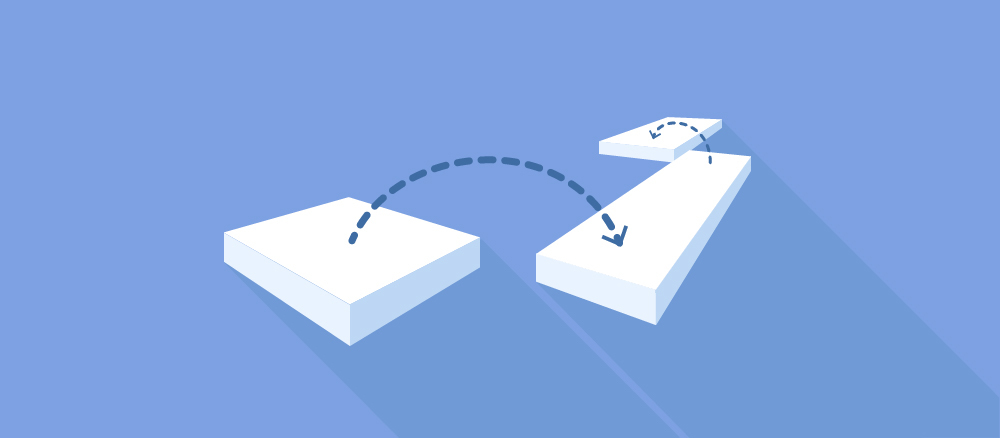
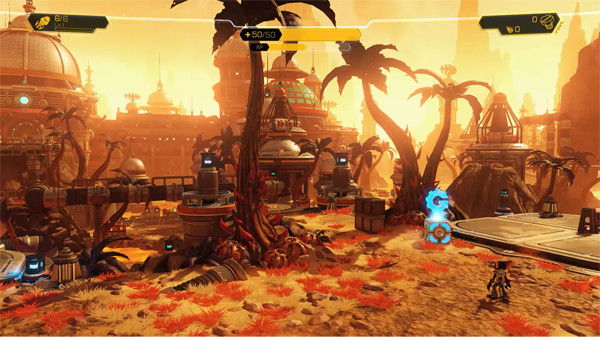
Planet Gaspard from the game Ratchet & Clank
There are many methods that help designers attract the attention of users. In some games, video clips (or camera spans) are used to direct the players 'attention to important, according to the developers' idea, elements. But by doing so, players are deprived of control. In other games, on the contrary, players can access important elements with their own hands by pressing a special button.
')
Anyway, in this article we will talk about my favorite way of directing attention - creating an initially literate level composition through the clever use of appearance and perspective.
Of course, I like other methods (usually used in the complex), but it is better to perform the design task at the design stage of the level so that it does not turn into a problem that should be solved already at the design stage. Naturally, in this case, a solution (for example, a video saver) will require much more resources and efforts.
What is a view and perspective?
The view is the interposition of the camera and the geometry of the level, which ensures the correct construction of the composition and emphasizes the important elements of the scene.
It means any place in a level that is arranged in such a way as to guarantee the user's attention to any important detail. Most often, this uses another special tool - perspective.
A perspective is a view that opens through a narrow corridor of trees, buildings, etc.
Successful construction of the view and perspective requires a thoughtful location of the orientations and accents of the game, as well as skillful placement of cameras. For example, at the beginning of the game (or at any time after loading) the designer can place reference points and accents in the very first frame, before the player gets control.
But this is not the only way to use them. Many games also use narrow spaces, corridors or other level elements that force the user to rotate the camera in a certain direction. For example, if a user has to enter the door, the camera is likely to be turned in its direction, and the perspective is built through it, on the other side of the door.
View and perspective are very powerful tools, especially if used in conjunction with other attention-grabbing tools mentioned above (such as video savers).
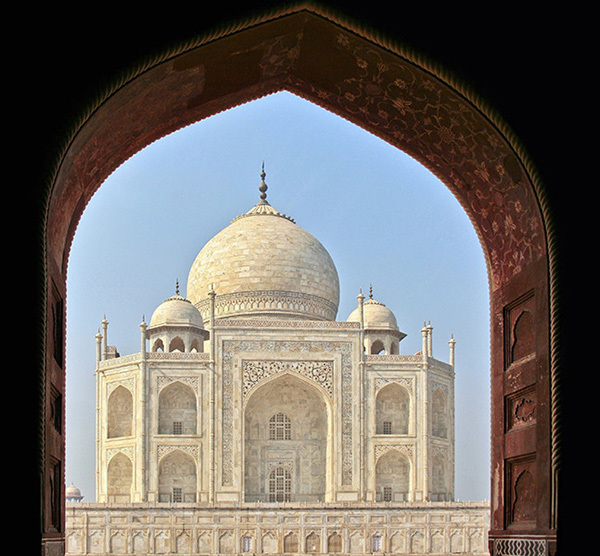
View of the Taj Mahal opening through a narrow corridor (Diego Delso, Wikimedia Commons, License CC-BY-SA 3.0)
Why use a view?
1. To demonstrate cool game art.
The most obvious advantage of using a view or perspective is to show players a beautiful game art: for example, as in this screenshot from Middle-earth: Shadows of Mordor.
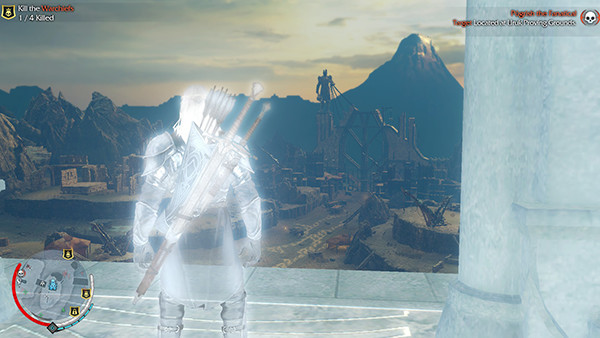
Control point in the game Middle-earth: Shadows of Mordor
This screenshot was taken at one of the control points of the game, which are represented there as tall towers with columns (one column in each of the four corners of the tower). Through each pair of columns, the player has a great view of the world around him.
2. To emphasize the highlight of the game
If there is an interesting feature in your game, whether it is in technology, art or gameplay, the right look and perspective will help you focus on it.

Opening view of the first planet in the game Super Mario Galaxy
The initial view of the first planet in the game Super Mario Galaxy draws attention to its special physics - the highlight of the game. The camera is positioned so that the rounded horizon of the planet and the objects that appear on it accentuate attention.
3. To guide the player
This screenshot from the game Elder Scrolls: Oblivion was made immediately after the end of training in the dungeon. After going outside the player opens this view, and the camera is located exactly at such an angle. Admission is quite often used in the Elder Scrolls series games. It allows designers to know exactly where the player’s gaze will be directed when he enters the next door.

View when leaving a dungeon in Elder Scrolls: Oblivion
Notice how the mooring line directs your attention to the ruins. The ruins have no special meaning in the game - just the Oblivion developers want to teach the player to live in an open world. They encourage him to go exploring this world without forcing him to do anything specifically. And this kind of great help to convey this idea.
4. To explore the plot or story of the game

Looking at this screenshot from the Super Mario Galaxy game, you can make two interesting observations:
Notice how the path ahead forms a line that brings your gaze to the falling stars. Think about this a little later when we talk about using lines to control attention.
1. The perspective created by the two hills directs the player’s attention along the path that leads to the next level.
2. The player sees the sky in the resulting perspective, and the falling stars become the key to understanding the whole plot of the game.
At the beginning of Half-Life 2, the player needs to somehow talk about what has happened since the last game. The screenshot was taken at an early stage of the game, when the player still knows almost nothing.
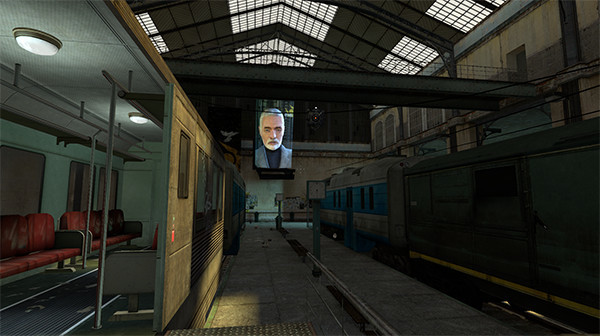
At the first level of the game, a perspective is often used to draw the player’s attention to video screens or non-player character dialogues. This allows designers to make sure that the player does not miss important moments and will gradually find out what is happening around without losing control of the game.
Tip: Camera Control
The designer does not need to fully control the camera to demonstrate good views to the player. For example, the view in the above screenshot from Half-Life 2 is not imposed: the character simply leaves the train and turns left. But since he already needs to go along this narrow corridor between the trains, he is guaranteed to see such a picture.
5. To create tension and intrigue
As mentioned earlier, the first level in Half-Life 2 is made in such a way that, due to the correct construction of the type and perspective, to give the player as much information as possible through video screens and dialogues. Video screens, as a rule, tell the player what is going on; Dialogues between non-player characters are needed mainly to scare him.
Take for example this episode with a security checkpoint:

The fence is built in the form of a labyrinth with three parallel sections, forming 3 separate perspectives. Of these, 2 develop a specific pattern for the player - they create a feeling of comfort. When this pattern is broken for the third time, the player feels dissonant and anxious.
Passing through the first corridor, made of mesh fencing, you will be guaranteed to look straight ahead, as it was intended. After passing the second corridor, you will see how the person on the right calmly crosses the checkpoint.
When you have almost passed the third corridor, the second person is just as calmly crossing the checkpoint in front of your eyes. You see how they both exit through the door at the far end of the corridor.
Finally, when you reach the checkpoint, you notice a pattern violation. Soldiers do not attack you, but one of them gets on the way to the door, through which 2 people have just left. The soldiers point you to another door that you did not see as you passed through the maze. Violation of the pattern confuses you and prompts you to ask yourself the question: why are you being led through another door? Is there any threat behind it?
The initial opening view gives the player a first impression of the level. And using all the tips above, you can turn it into a powerful tool for creating a good first impression.


Planet Gaspard from the game Ratchet & Clank
There are many methods that help designers attract the attention of users. In some games, video clips (or camera spans) are used to direct the players 'attention to important, according to the developers' idea, elements. But by doing so, players are deprived of control. In other games, on the contrary, players can access important elements with their own hands by pressing a special button.
')
Anyway, in this article we will talk about my favorite way of directing attention - creating an initially literate level composition through the clever use of appearance and perspective.
Of course, I like other methods (usually used in the complex), but it is better to perform the design task at the design stage of the level so that it does not turn into a problem that should be solved already at the design stage. Naturally, in this case, a solution (for example, a video saver) will require much more resources and efforts.
What is a view and perspective?
The view is the interposition of the camera and the geometry of the level, which ensures the correct construction of the composition and emphasizes the important elements of the scene.
It means any place in a level that is arranged in such a way as to guarantee the user's attention to any important detail. Most often, this uses another special tool - perspective.
A perspective is a view that opens through a narrow corridor of trees, buildings, etc.
Successful construction of the view and perspective requires a thoughtful location of the orientations and accents of the game, as well as skillful placement of cameras. For example, at the beginning of the game (or at any time after loading) the designer can place reference points and accents in the very first frame, before the player gets control.
But this is not the only way to use them. Many games also use narrow spaces, corridors or other level elements that force the user to rotate the camera in a certain direction. For example, if a user has to enter the door, the camera is likely to be turned in its direction, and the perspective is built through it, on the other side of the door.
View and perspective are very powerful tools, especially if used in conjunction with other attention-grabbing tools mentioned above (such as video savers).
View of the Taj Mahal opening through a narrow corridor (Diego Delso, Wikimedia Commons, License CC-BY-SA 3.0)
Why use a view?
1. To demonstrate cool game art.
The most obvious advantage of using a view or perspective is to show players a beautiful game art: for example, as in this screenshot from Middle-earth: Shadows of Mordor.

Control point in the game Middle-earth: Shadows of Mordor
This screenshot was taken at one of the control points of the game, which are represented there as tall towers with columns (one column in each of the four corners of the tower). Through each pair of columns, the player has a great view of the world around him.
2. To emphasize the highlight of the game
If there is an interesting feature in your game, whether it is in technology, art or gameplay, the right look and perspective will help you focus on it.

Opening view of the first planet in the game Super Mario Galaxy
The initial view of the first planet in the game Super Mario Galaxy draws attention to its special physics - the highlight of the game. The camera is positioned so that the rounded horizon of the planet and the objects that appear on it accentuate attention.
3. To guide the player
This screenshot from the game Elder Scrolls: Oblivion was made immediately after the end of training in the dungeon. After going outside the player opens this view, and the camera is located exactly at such an angle. Admission is quite often used in the Elder Scrolls series games. It allows designers to know exactly where the player’s gaze will be directed when he enters the next door.

View when leaving a dungeon in Elder Scrolls: Oblivion
Notice how the mooring line directs your attention to the ruins. The ruins have no special meaning in the game - just the Oblivion developers want to teach the player to live in an open world. They encourage him to go exploring this world without forcing him to do anything specifically. And this kind of great help to convey this idea.
4. To explore the plot or story of the game

Looking at this screenshot from the Super Mario Galaxy game, you can make two interesting observations:
Notice how the path ahead forms a line that brings your gaze to the falling stars. Think about this a little later when we talk about using lines to control attention.
1. The perspective created by the two hills directs the player’s attention along the path that leads to the next level.
2. The player sees the sky in the resulting perspective, and the falling stars become the key to understanding the whole plot of the game.
At the beginning of Half-Life 2, the player needs to somehow talk about what has happened since the last game. The screenshot was taken at an early stage of the game, when the player still knows almost nothing.

At the first level of the game, a perspective is often used to draw the player’s attention to video screens or non-player character dialogues. This allows designers to make sure that the player does not miss important moments and will gradually find out what is happening around without losing control of the game.
Tip: Camera Control
The designer does not need to fully control the camera to demonstrate good views to the player. For example, the view in the above screenshot from Half-Life 2 is not imposed: the character simply leaves the train and turns left. But since he already needs to go along this narrow corridor between the trains, he is guaranteed to see such a picture.
5. To create tension and intrigue
As mentioned earlier, the first level in Half-Life 2 is made in such a way that, due to the correct construction of the type and perspective, to give the player as much information as possible through video screens and dialogues. Video screens, as a rule, tell the player what is going on; Dialogues between non-player characters are needed mainly to scare him.
Take for example this episode with a security checkpoint:

The fence is built in the form of a labyrinth with three parallel sections, forming 3 separate perspectives. Of these, 2 develop a specific pattern for the player - they create a feeling of comfort. When this pattern is broken for the third time, the player feels dissonant and anxious.
Passing through the first corridor, made of mesh fencing, you will be guaranteed to look straight ahead, as it was intended. After passing the second corridor, you will see how the person on the right calmly crosses the checkpoint.
When you have almost passed the third corridor, the second person is just as calmly crossing the checkpoint in front of your eyes. You see how they both exit through the door at the far end of the corridor.
Finally, when you reach the checkpoint, you notice a pattern violation. Soldiers do not attack you, but one of them gets on the way to the door, through which 2 people have just left. The soldiers point you to another door that you did not see as you passed through the maze. Violation of the pattern confuses you and prompts you to ask yourself the question: why are you being led through another door? Is there any threat behind it?
The initial opening view gives the player a first impression of the level. And using all the tips above, you can turn it into a powerful tool for creating a good first impression.
Source: https://habr.com/ru/post/306224/
All Articles